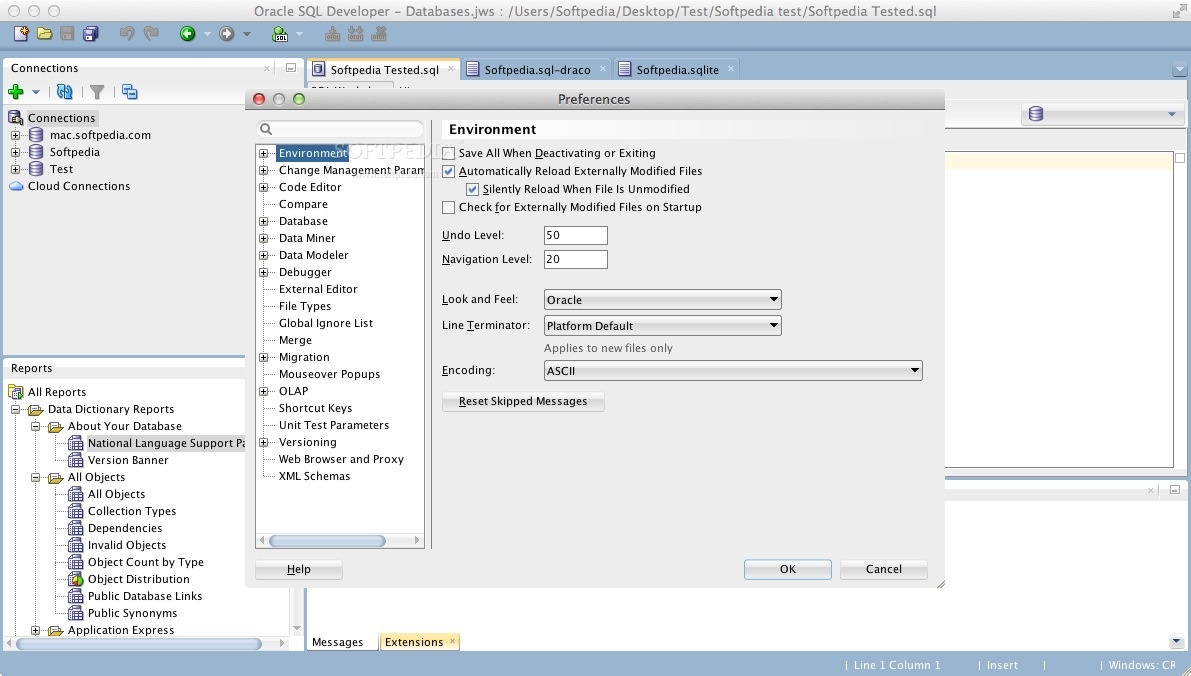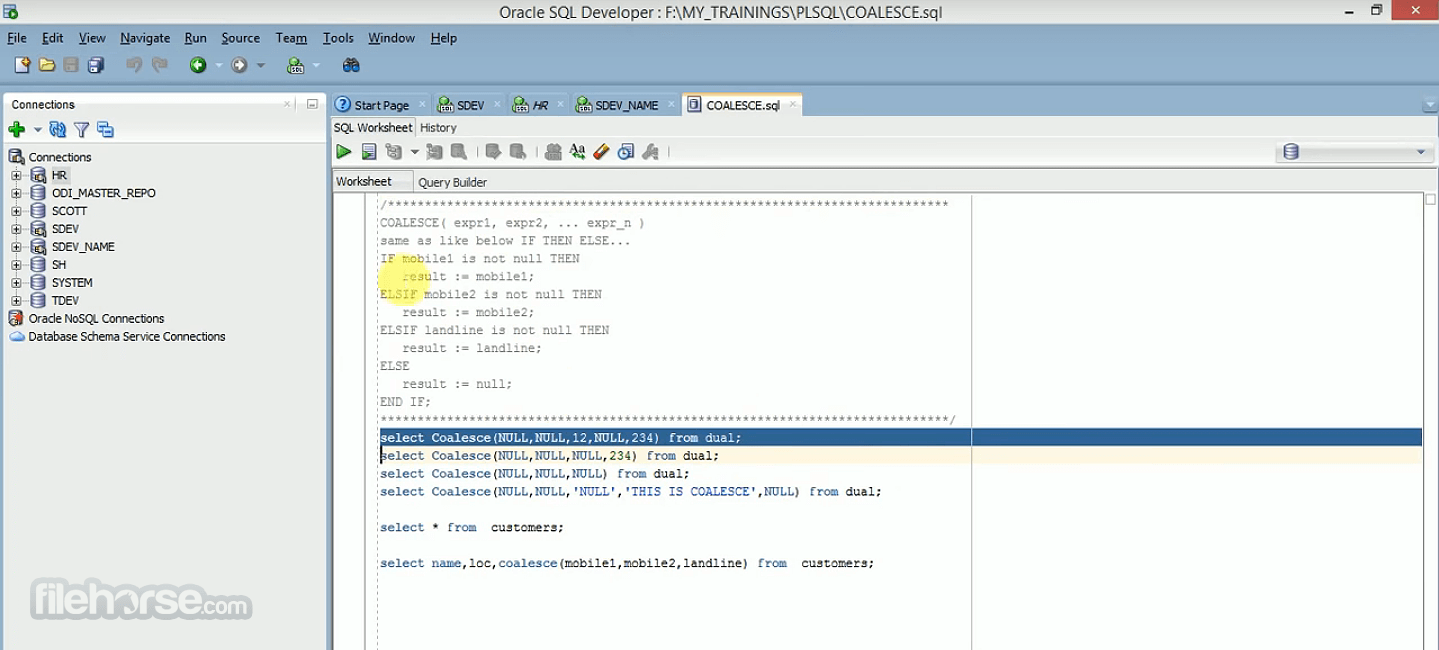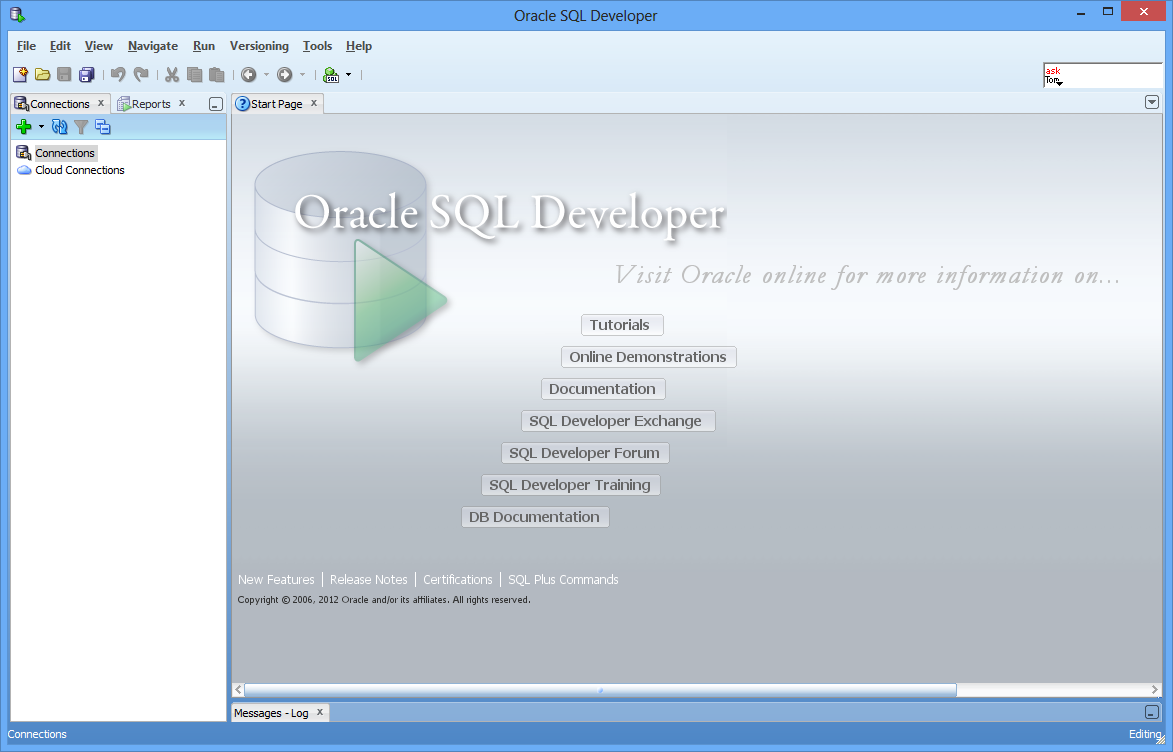
You will use the Create Table dialog box to create the table declaratively the table that you create will be essentially the same as if you had entered the following statement using the SQL Worksheet: CREATE TABLE patrons (ĬONSTRAINT patron_last_not_null NOT NULL,ĬONSTRAINT patrons_pk PRIMARY KEY (patron_id)) It includes an object type (MDSYS.SDO_GEOMETRY) column. The PATRONS table contains a row for each patron who can check books out of the library (that is, each person who has a library card). Go to Create a Table (PATRONS) to create the next table. You must enter the condition using SQL syntax that is valid in a CHECK clause (but do not include the CHECK keyword or enclosing parentheses for the entire CHECK clause text).Ĭondition: rating is null or (rating >= 1 and rating <= 10)

In Available Columns, double-click TITLE and then AUTHOR_LAST_NAME to move them to Selected Columns.Ĭlick Add to add a check constraint for the table, namely, that the rating column value is optional (it can be null), but if a value is specified, it must be a number from 1 through 10.

Also, the combination of last name and title is not always a "foolproof" check for uniqueness, but it is sufficient for this simple scenario.) (This is deliberately oversimplified, since most major libraries will have allow more than one copy of a book in their holdings. For this table, you will use the Unique Constraints and Check Constraints panes.Ĭlick Add to add a unique constraint for the table, namely, that the combination of author_last_name and title must be unique within the table. This displays a pane for more table options. (Librarian's personal rating of the book, from 1 (poor) to 10 (great))Īfter you have entered the last column (rating), check Advanced (next to Schema).
#ORACLE SQL DEVELOPER CODE#
This is the Dewey code or other book identifier.) Primary Key (Automatically checks Not Null an index is also created on the primary key column. (If you accidentally click OK instead of Add Column, right-click the BOOKS table in the Connections navigator display, select Edit, and continue to add columns.)

After creating each column except the last one (rating), click Add Column to add the next column. Schema: Specify your current schema as the schema in which to create the table.Ĭreate the table columns using the following information. Be sure that the Advanced box is not checked when you start creating the table.) (If a tab or field is not mentioned, do not enter anything for it. Right-click the Tables node in the schema hierarchy on the left side, select New Table, and enter the following information. To create the BOOKS table, connect to the database as the user in the schema you want to use for this tutorial. You will use the Create Table dialog box to create the table declaratively the table that you create will be essentially the same as if you had entered the following statement using the SQL Worksheet: CREATE TABLE books (ĬONSTRAINT books_pk PRIMARY KEY (book_id),ĬONSTRAINT rating_1_to_10 CHECK (rating IS NULL ORĬONSTRAINT author_title_unique UNIQUE (author_last_name, title)) It includes columns of character and number types, a primary key, a unique constraint, and a check constraint.

The BOOKS table contains a row for each book in the library.


 0 kommentar(er)
0 kommentar(er)
